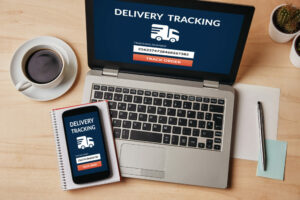Delivery to the consumer is a key part of running a successful business, but in the modern digital world, customers have higher expectations than ever before.
Waiting a week for an online order is a thing of the past, and companies who don’t have the infrastructure in place to deliver faster will find themselves losing business.
What is driving the change?
The growth of e-commerce businesses means the market is now extremely competitive. Given the choice between similar products, consumers will usually opt for the one they will receive sooner rather than stick with a brand they’ve ordered from before.
While this is great news for growing businesses, it means investment in the logistics stream needs to be a serious consideration.
Next day delivery has become standard practice and, what’s more, something that consumers have come to expect.
Same-day delivery is now also offered by multiple companies. So to avoid falling behind in this competitive market, it’s clear that businesses will need to invest a sizeable chunk of their resources into improving their own logistics stream.
Fail to do so and they run the risk of falling behind, which subsequently means losing sales.
Case studies: leading the last-mile
The much talked about ‘last mile’ of the delivery process is where we are already seeing the most innovation in the logistics stream. And even smaller companies are embracing new technology and using data to monitor and speed up their delivery processes.
A survey carried out by McKinsey found that 25 per cent of consumers are willing to pay a premium for same-day delivery services.
The same survey found that 70 per cent of people surveyed would still prefer the cheapest option available. However, McKinsey predicts this number is likely to grow based on the 30 per cent of younger consumers who said they would always choose the faster delivery method.
Learn how two small businesses are adapting their technology to meet the changing demands of their customers in this investigation into the future of last mile logistics.
Invest time in tracking
Along with faster delivery times, customers are getting used to being able to track their deliveries at every step of the way. From the moment they complete the online checkout process they expect full visibility of the status of their order.

This is something that recipe box delivery service, Mindful Chef, are already focusing on.
Bertrand Nicoli is director of operations at Mindful Chef, and he agrees new technology will impact customer expectations, ‘I see [new technology] improving customer visibility. Customers will be able to re-route deliveries to parcel shops and track the delivery van in real time. At the moment there is one company leading the tech side for couriers in the UK, but I see their tech being standard inside five years.’
This obviously benefits business as they can fully trace a parcel if anything goes wrong or the package is lost in transit. But it also provides customer satisfaction as every order can be tracked and traced by the customer and a realistic delivery time can be provided. This could mean an end to the frustration of waiting at home for a delivery with an eight-hour window.
Get app-y
The boom in smartphone ownership has given rise to the world of apps. Consumers can unlock their phone, click on an app and get everything from a taxi direct to their location, book flights and hotels for the same day, or hire someone to weed their garden or bring them lunch.
Crowdsourcing deliveries are no longer a thing of the future, companies are already leveraging this.
Trouva is an online marketplace who focus on helping independent boutiques meet the high expectations of online consumers. Their COO, Glen Walker, understands how the gig economy can work during the last mile of the delivery process, using the ability to move orders to a different courier to speed up the shipping.
Delivering the change
Along with making sure they stay ahead of all technological advances in their industry, small businesses need to have the courage to invest in these new technologies and invest early on to have the best chance of staying ahead of the competition.
For small businesses wishing to grow quickly and efficiently the message is clear: invest in your logistics stream, pay close attention to the last mile, and listen to what your customers want.
Andrew Wood is e-commerce manager at Rajapack.




